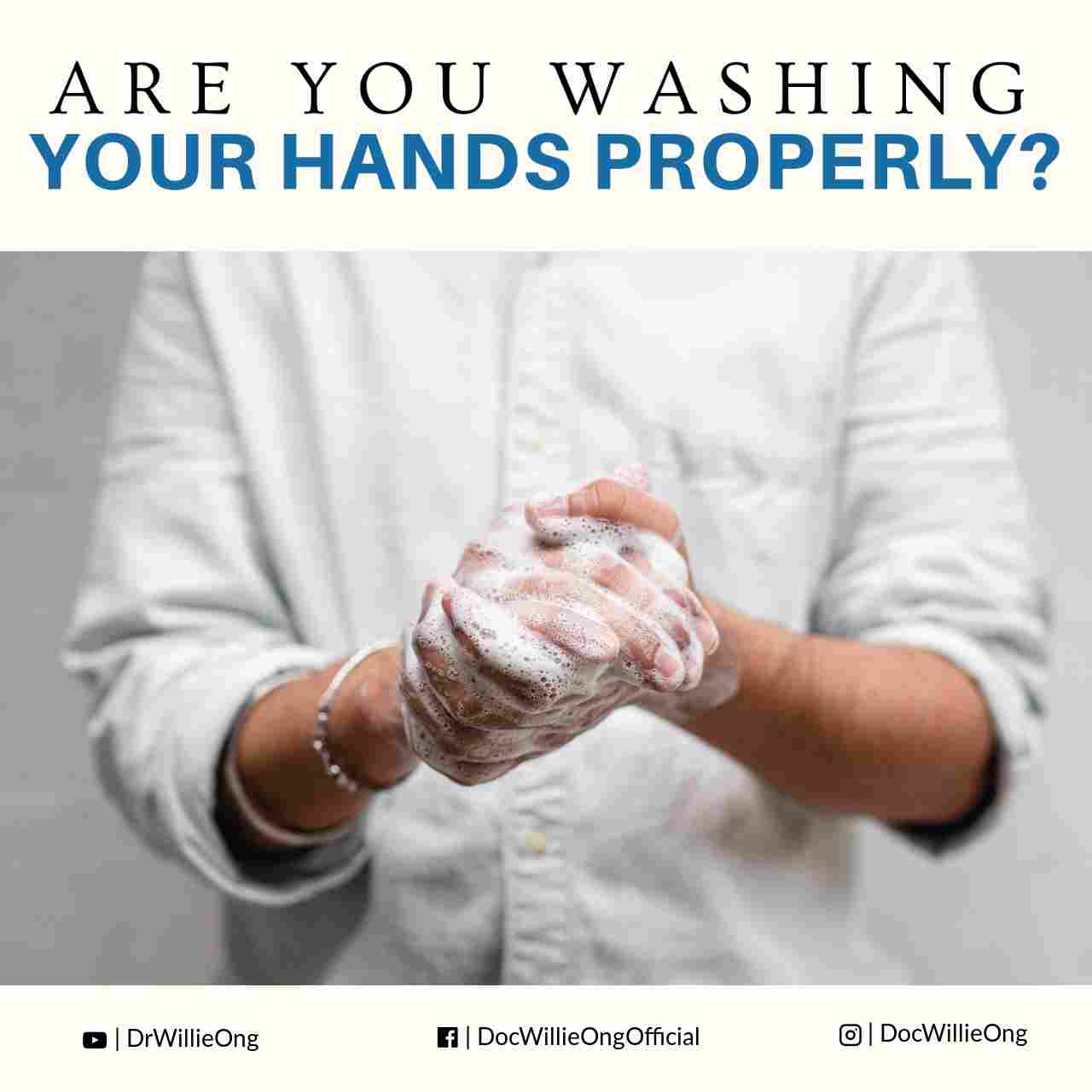Dr. Willie T. Ong (Internist-Cardiologist)
Did you know that we have an estimated ten million bacteria on each of our hands? True. According to infectious disease expert, Dr. Mediadora Saniel, the best way to reduce infections is through proper hand washing.
By simply washing your hands regularly, you can prevent a hoard of deadly diseases like swine flu, SARS, tuberculosis, diarrhea, typhoid, sore eyes and other future pandemics. The problem with germs is that because we don’t see them, we are not reminded to wash our hands.
How To Do Proper Hand Washing
If you ask people if they wash their hands, they would mostly say “yes.” However, a US-based study shows that majority of adults do not know how to wash their hands properly. The people in the study usually missed cleaning the back of the hands, the fingertips, and the area around the thumb.
The following tips are adapted from the American Centers for Disease Control and Prevention guidelines:
- Understand that the sink is considered a dirty area. When standing in front of the sink, be careful not to touch any of its surface.
- If you can, remove any jewelry (except for wedding bands) before washing your hands. Microbes can accumulate in the inner areas of your jewelry. Just be careful you don’t lose your valuables!
- First step is to wet your hands thoroughly up to the arm area. Keep your arms diagonal, with your hands lower than your elbows to allow the water to run down to your fingertips. This will let water flow from the less contaminated area (the forearms and wrist) to the more contaminated area (the hands and fingertips).
- Next, lather your hands with soap and water. Rinse the soap first with water so you can remove any soap suds that may contain microorganisms. If you are using liquid soap, pour around one teaspoonful and then lather.
- Now, scrub ALL areas of the hands. First, clean the palms together. Second, scrub the back of your fingertips and nails on the palm of the other hand. Third, slide the palm of one hand on the backside of the other hand, using an up and down motion. Do this several times. Fourth, clean the area around each finger, especially the thumb. Finally, wash your wrists, up to the forearms. When washing the forearms, wash as high up the arm as you feel might be dirty.
- Tips for scrubbing your hands: Do this firmly and with circular motions. Friction caused by rubbing of the hands will remove dirt and microbes.
- Take note that dirt can easily accumulate inside your fingernails. If possible, use a brush to clean surfaces under the nails or you can just use the nails of one hand to scrape the dirt off your other fingernails.
- Scrub your hands for at least a minute, or you can sing “Happy Birthday” twice while washing your hands.
- Finally, rinse your hands with clean running water. Closely examine your hands if you missed some dirt or foam.
- The last step is to dry your hands with a towel or you may use an air dryer. If possible, use a paper towel to turn off the faucet. If your skin tends to dry up from the type of soap used, apply lotion to moisturize and soften your hands.
How To Use Hand Sanitizers
If soap and clean water are not available, use an alcohol-based product to clean your hands. Alcohol-based hand rubs significantly reduce the number of germs on the skin. First, apply the liquid to the palm of one hand. Then, rub hands together. Rub the product over all surfaces of the hands and fingers until hands are dry. In fact, alcohol-based products are superior to soap and water in killing bacteria. So it pays to keep one handy in your bag.
When Should You Wash Hands?
According to the Harvard Medical School Family Health Guide, you should wash your hands for the following instances: (1) before preparing or eating food, (2) after going to the bathroom, (3) before and after visiting a sick person, (4) after blowing your nose, coughing, or sneezing, (5) when you have a skin infection, (6) before and after treating a wound, (7) when people around you are sick, and (8) after handling an animal or garbage.
Remember that shaking hands can easily pass bacteria from one person to another. Hence, make hand washing a habit. Let’s teach our kids the proper way to wash their hands. It’s the best way to stay healthy and avoid infections.



